


Tips For Small And Large Gardens
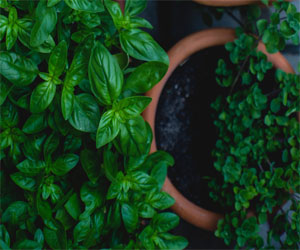
The space you allocate to your herb garden is an essential factor in determining its success. Whether you have a small balcony or a sprawling backyard, making the most of your herb garden space is crucial. In this article, we'll explore how to maximize your herb garden space, regardless of its size, to create a thriving green oasis right at home.
Small Herb Gardens
Container Gardening
Small spaces call for creative solutions, and container gardening is an excellent option. Here's how to make the most of limited space:
Choose compact herb varieties suitable for containers, like bushy basil, compact thyme, and dwarf rosemary.
Select containers with proper drainage and consider hanging pots, window boxes, or vertical herb gardens.
Group compatible herbs in a single pot or use tiered plant stands to stack multiple containers vertically.
Regularly prune and harvest your herbs to maintain their size and prevent overcrowding.
Indoor Herb Gardens
If you have limited outdoor space, an indoor herb garden can provide fresh herbs year-round. Some tips for indoor gardening include:
Place pots on windowsills or under artificial grow lights to ensure they receive adequate sunlight.
Consider using self-watering pots or hydroponic systems to make indoor herb gardening more convenient.
Be attentive to indoor humidity and ventilation to prevent issues like mildew or pests.
Keep pots near the kitchen for easy access to fresh herbs while cooking.
Large Herb Gardens
Garden Layout
Larger garden spaces offer more opportunities for creativity and plant diversity. Consider these strategies for maximizing your herb garden space:
Design your garden with clearly defined paths and designated planting areas to optimize organization and accessibility.
Plan for perennial herbs, like rosemary and thyme, to be situated in long-lasting positions, while annuals can be rotated or planted in different spots each season.
Create garden beds with raised borders, allowing for optimal drainage and soil quality control.
Mix herbs with complementary colors and growth habits to create a visually appealing garden landscape.
Companion Planting
In large herb gardens, companion planting can help maximize space and improve plant health. Some beneficial companion planting ideas include:
Planting basil alongside tomatoes to enhance tomato flavor and deter pests.
Interplanting aromatic herbs like rosemary and sage among vegetables to discourage insects.
Pairing herbs with flowering plants to attract pollinators and beneficial insects to your garden.
Vertical Gardening
Large garden spaces can also benefit from vertical gardening techniques:
Install trellises or garden walls for climbing herbs like cucumbers and vining plants to optimize vertical space.
Train herbs like mint and oregano to grow vertically in containers to prevent them from spreading too aggressively.
Create vertical herb planters with multiple shelves to maximize your planting area.
Regardless of the size of your herb garden space, there are strategies to make the most of it. Small herb gardens can thrive in containers and indoors, while larger spaces offer opportunities for garden layouts, companion planting, and vertical gardening. By implementing these techniques, you can transform your herb garden into a space that not only provides fresh and flavorful herbs but also enhances your gardening experience and overall well-being. Whether you have a modest windowsill or acres of open land, maximizing your herb garden space can lead to a fulfilling and productive gardening journey.


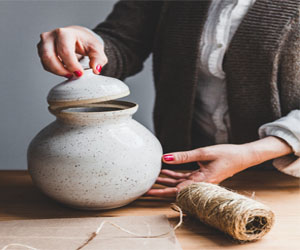
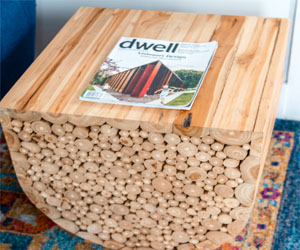


Crafting Your Way To Inner Peace
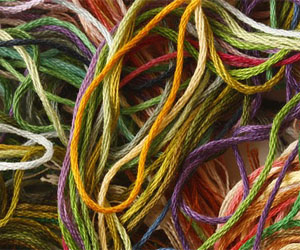 Handmade serenity is a form of active meditation. As you immerse yourself in your craft, you enter a state of flow, where time seems to stand still, and you're completely absorbed in the process. This meditative quality of crafting can be profoundly calming and is akin to mindfulness meditation, a practice proven to reduce anxiety and promote mental and emotional well-being.
Handmade serenity is a form of active meditation. As you immerse yourself in your craft, you enter a state of flow, where time seems to stand still, and you're completely absorbed in the process. This meditative quality of crafting can be profoundly calming and is akin to mindfulness meditation, a practice proven to reduce anxiety and promote mental and emotional well-being.
The tactile nature of handmade creations has a soothing effect on your senses. Feeling the textures, seeing the colors, and manipulating the materials can be a sensory experience that grounds you in the moment. Whether you're kneading dough for homemade bread, shaping clay into pottery, or sewing fabric into a quilt, your senses come alive, enhancing your connection to the world around you.
Moreover, handmade serenity is about the sense of accomplishment that comes with completing a project. Seeing your creations come to life can be incredibly rewarding, instilling a sense of pride and purpose. It's a tangible representation of your creativity and effort, and this feeling of achievement can boost your self-esteem and sense of self-worth.
Exploring The Benefits
 Medicinal Properties
Medicinal Properties
Herbs have been used for centuries as natural remedies for a wide range of ailments. Lavender is renowned for its calming and soothing properties, chamomile for its digestive benefits, and peppermint for its ability to alleviate headaches. Growing these herbs allows you to harness their medicinal powers for home remedies and holistic wellness.
Aromatherapy
The fragrant oils found in herbs are not just for flavor and aroma. They also have therapeutic qualities. Lavender, for instance, is widely used in aromatherapy to promote relaxation and reduce stress. Aromatic herbs can transform your garden into an outdoor sanctuary for your senses.
Environmental Benefits
Herb gardens contribute to a more sustainable and eco-friendly lifestyle. By growing your herbs, you reduce the demand for commercially cultivated, chemically treated herbs. This practice conserves resources and minimizes the environmental impact of herb production.
Cost-Effective
Maintaining an herb garden can save you money in the long run. Store-bought herbs can be expensive, and they often come in quantities larger than you need, leading to waste. By growing your herbs, you can have a fresh supply on hand while minimizing expenses.
Educational Value
Herb gardening offers a valuable learning experience. It can be an engaging and educational hobby for individuals and families alike.
Crafting Creativity And Fulfillment
 Sense Of Accomplishment: There's a profound sense of accomplishment that comes with completing a woodworking project. The act of seeing your vision take shape, from the initial design to the final finished piece, is incredibly rewarding. It builds confidence and self-esteem, and each project serves as a tangible testament to your skills and dedication.
Sense Of Accomplishment: There's a profound sense of accomplishment that comes with completing a woodworking project. The act of seeing your vision take shape, from the initial design to the final finished piece, is incredibly rewarding. It builds confidence and self-esteem, and each project serves as a tangible testament to your skills and dedication.
Learning And Growth: Woodworking as a hobby is a journey of continuous learning and growth. It's an opportunity to acquire new skills and techniques, from mastering joinery methods to understanding different types of wood. The learning curve is steep, but the journey is part of the joy, as you gradually progress from simple projects to more complex creations.
Customization And Personalization: One of the most appealing aspects of woodworking as a hobby is the ability to customize and personalize your creations. You can design and build items that fit your specific needs and preferences. Whether it's crafting a piece of furniture that matches your home decor or constructing a gift that resonates with a loved one, woodworking empowers you to create truly unique and meaningful pieces.
Community And Camaraderie: Woodworking enthusiasts often find a supportive and like-minded community. Whether you're sharing your latest project with fellow hobbyists at a woodworking club, participating in online forums, or attending workshops, the sense of camaraderie and shared passion is a cherished aspect of the hobby.
Preserving Tradition And Heritage: Woodworking as a hobby allows individuals to carry forward traditions and heritage. Many woodworking techniques have been passed down through generations, and by engaging in this craft, you become a part of this rich legacy, preserving and passing on valuable knowledge.
Exploring The World Of Embroidery Stitches
 French Knot: A highly decorative stitch that creates raised, textured dots. These knots can be used for flowers, eyes, or other small, ornamental details.
French Knot: A highly decorative stitch that creates raised, textured dots. These knots can be used for flowers, eyes, or other small, ornamental details.
Chain Stitch: A looping stitch that forms a chain-like line. It's versatile and can be used for both lines and filling areas, creating a textured, rope-like appearance.
Feather Stitch: This stitch resembles the delicate fronds of a feather, with stitches on either side of a central line. It is often used to depict leaves, vines, or other organic elements.
Bullion Knot: A stitch that creates a raised, coiled effect. It's perfect for floral and three-dimensional embroidery work, adding depth and dimension.
Embroidery In Culture And Tradition: Regional Stitches
Different cultures around the world have their unique embroidery stitches and styles, often reflecting the traditions, values, and artistic sensibilities of their communities.
Sashiko (Japan): Known for its geometric, repetitive patterns, sashiko uses running stitches to create designs that are both decorative and functional. It's often used for mending and reinforcing fabric.
Crewelwork (England): This traditional embroidery style employs wool threads and intricate stitches to create detailed designs, often depicting pastoral scenes and floral motifs.
Hedebo (Denmark): Characterized by its delicate cutwork and intricate whitework embroidery, Hedebo is a reflection of Danish needlework traditions, often used for table linens and clothing.
The Fascinating World Of Ancient Brewing
 Brewing As A Cultural Ritual: In ancient societies, brewing held a special place in both religious and social contexts. Beer was often associated with various deities and played a vital role in religious rituals. In Egypt, for instance, beer was a part of offerings to the gods, while in Sumeria, it was seen as a gift from the goddess Ninkasi, who was not only the goddess of beer but also a symbol of the Sumerian way of life.
Brewing As A Cultural Ritual: In ancient societies, brewing held a special place in both religious and social contexts. Beer was often associated with various deities and played a vital role in religious rituals. In Egypt, for instance, beer was a part of offerings to the gods, while in Sumeria, it was seen as a gift from the goddess Ninkasi, who was not only the goddess of beer but also a symbol of the Sumerian way of life.
The Influence Of Ancient Brewing: The techniques developed by ancient civilizations have had a profound influence on brewing throughout history. The knowledge of fermenting grains, along with the discovery of hops in medieval Europe, led to the development of beer as we know it today. Ancient brewing traditions continue to inspire modern craft brewers who look to revive old recipes and ingredients to create unique and historically accurate brews.
Brewing In the Modern Age: Despite the vast differences between ancient brewing techniques and modern practices, there are some striking similarities. Both ancient and contemporary brewers share a fundamental understanding of the transformative power of yeast. Yeast, the microorganism responsible for fermentation, was a key component in ancient brewing and continues to be the cornerstone of brewing today.
Moreover, the reverence for beer as a social and cultural drink has endured through the ages. Just as in ancient times, beer today continues to bring people together, whether it's enjoying a pint at a local pub or brewing with friends in the comfort of one's home.
Creating Beauty From Discards
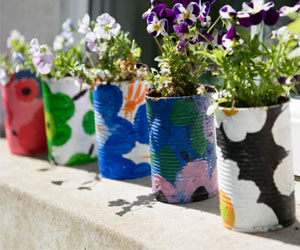 Environmental Benefits
Environmental Benefits
One of the most compelling aspects of repurposed materials is their positive environmental impact. By upcycling, we reduce the need for new resources, which saves energy and conserves raw materials. This practice significantly lessens the burden on landfills and cuts down on pollution generated during the production of new items.
Resourcefulness And Creativity
Repurposing materials encourages resourcefulness and sparks creativity. When working with limited resources, artists often find innovative solutions to turn discarded items into functional and beautiful pieces. This process can lead to fresh ideas and designs that stand out for their uniqueness.
Artistic Expression And Uniqueness
Repurposed materials are celebrated for their artistic expression and uniqueness. Each piece tells a story, preserving the history and character of the original materials. Whether it's a coffee table made from an old door or a lamp fashioned from discarded industrial equipment, these creations are one-of-a-kind.
A Sustainable Lifestyle
Repurposed materials fit perfectly within the framework of a sustainable lifestyle. By incorporating upcycled items into your home or daily life, you contribute to a more eco-friendly world. Not only do you reduce your carbon footprint, but you also promote the principles of recycling, reusing, and repurposing.
Inspiration And Community
Repurposed materials often inspire like-minded individuals who appreciate creativity and sustainability.
Stitching Timeless Craftsmanship
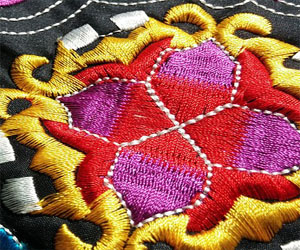 Historical Roots: The origins of traditional needlework can be traced back centuries, with evidence of embroidered textiles dating as far back as the ancient Egyptians and Chinese dynasties. Throughout history, women (and men) have used their skills in needlework to embellish clothing, linens, and decorative items, often showcasing cultural motifs and symbols unique to their regions.
Historical Roots: The origins of traditional needlework can be traced back centuries, with evidence of embroidered textiles dating as far back as the ancient Egyptians and Chinese dynasties. Throughout history, women (and men) have used their skills in needlework to embellish clothing, linens, and decorative items, often showcasing cultural motifs and symbols unique to their regions.
A Cultural Tapestry: Traditional needlework is a rich tapestry that weaves together the customs, beliefs, and aesthetics of different cultures. From the vibrant colors of Mexican embroidery to the delicate stitches of Japanese sashiko, each style carries a piece of its cultural heritage. It's a means of preserving and passing down the stories of a community, one stitch at a time.
Family Heirlooms: One of the most beautiful aspects of traditional needlework is its role in creating family heirlooms. Hand-embroidered tablecloths, quilts, and samplers have been cherished and passed down through generations, connecting the past with the present and ensuring that the skills and artistry of ancestors live on.
Crafted With Love And Sustainability
 Uniqueness And Personalization
Uniqueness And Personalization
DIY upcycled gifts are unique and personalized. Each creation is one-of-a-kind, reflecting the maker's individual style and the recipient's preferences. Whether it's upcycled jewelry, a hand-sewn bag, or repurposed decor, the inherent charm of these gifts is in their distinctiveness.
Endless Possibilities
The possibilities for DIY upcycled gifts are virtually limitless. Some popular ideas include turning vintage teacups into candles, transforming old windows into picture frames, crafting planters from used containers, and creating tote bags from discarded clothing. With a little imagination and resourcefulness, the sky's the limit.
Getting Started With DIY Upcycled Gifts
Gather Materials: Start by collecting the materials you'll need for your chosen project. This may involve hunting for discarded items, vintage finds, or materials you already have at home.